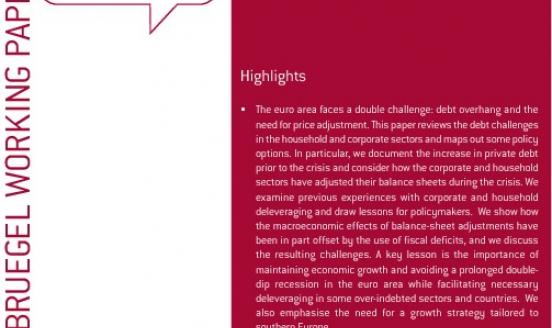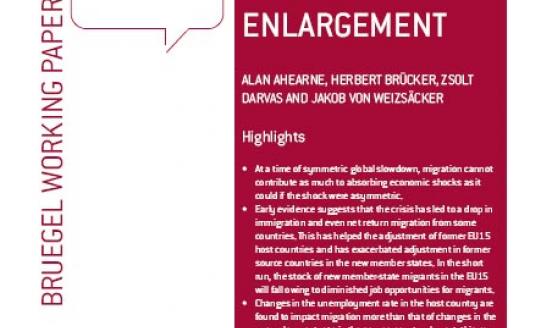Is there life after Greenspan?
Former French president Charles de Gaulle once remarked that “graveyards are full of indispensable men.” As Alan Greenspan’s 19-year tenure as Chairman of the Federal Reserve draws to a close, and global financial markets nervously contemplate the prospect of life without the venerated Fed chief, a little perspective is needed.
Greenspan is, to be sure, an extraordinarily gifted economist and has been a remarkably successful Fed chairman. But the world will not end when Greenspan retires on 31st January 2006, the foundations of the U.S. economy will stay strong, and the setting of U.S. monetary policy will remain in good hands.
After so long at the helm of the world’s most powerful central bank, the unease among financial market participants and policymakers about Greenspan’s imminent departure is understandable. Under Greenspan, the Fed delivered low inflation and the U.S. economy enjoyed the longest economic expansion in history, sandwiched between two mild and short-lived recessions.
Greenspan was there to calm financial markets and guide the U.S. economy safely through a series of potentially devastating shocks, from the stock market crash in 1987 and the emerging-market financial crisis in 1997-1998, to the September 11 terrorist attacks and the bursting of the high-tech bubble
in the early 2000’s.
What really seems to make financial markets fret is the realization that there is not another Alan Greenspan to replace Alan Greenspan. Greenspan brought to the job a near perfect combination of talents and experience. He combined enormous intellectual firepower and a deep understanding of how economic systems functioned with hands-on experience in both the business world and in policy making. We who worked for him were constantly amazed by the breath and depth of his knowledge about what has happening in the global economy.
Added to that was a political savvy that gave the Fed the independence to make decisions that were sometimes unpopular with others in Washington.
Especially impressive was that Greenspan worked equally successful under President Clinton--a Democrat--as under Republican presidents.
Of course Greenspan had his critics. To some peoples’ tastes, he was too close to the Republican party, particularly in his support for President Bush’s tax cuts in 2001-2003. In addition, he faced criticism that although he warned in 1996 of irrational exuberance in the stock market, he did little to stop the stock price bubble inflating in the late 1990s.
At the Federal Reserve Bank of Kansas City’s annual conference at Jackson Hole last weekend, Princeton’s Alan Blinder, a former vice-chairman of the Fed, said of Greenspan that “when the score is toted up, we think he has legitimate claim to be the greatest central banker who ever lived.”
But while Greenspan’s performance has undoubtedly been stellar, fears of impending doom as he prepares to leave are overblown.
For starters, transitions from one chairman of the Fed to the next have typically been smooth. A case in point is 1987 when Alan Greenspan took over the reins of the Fed from the then chairman Paul Volcker. Much like today, many worried at that time that no-one would be able to fill the shoes of the revered Volcker, the man who brilliantly conquered the high inflation of the late 1970s. Greenspan accepted the post, and the rest is history.
And while President Bush has yet to announce his choice for a successor to Greenspan, there is no shortage of outstanding candidates. With time ticking down, three frontrunners have emerged from the pack: Martin Feldstein, a Harvard University economist and former advisor to President Reagan; Columbia University's Glenn Hubbard, who was formerly head of President Bush’s Council of Economic Advisers; and Ben Bernanke, a former economics professor at Princeton and currently the White House’s top economic advisor who earned high marks from Wall Street during his recent stint as a Fed governor.
But when it comes to filling posts, President Bush has a record of surprising political watchers with his choices. He may well choose someone outside of the three names above, perhaps someone with closer connections with Wall Street.
Each of these men has the talents and experience to lead the Fed. Crucially, they share with Greenspan the view that the most important objective of monetary policy is to deliver price stability. Bernanke, for example, would like to see the Fed adopt an inflation targeting framework, though he favors a version of inflation targeting that in practice gives a central bank the flexibility to focus on full employment as well as the inflation rate. As Greenspan himself has noted many times, economies tend to perform best in an environment of low and stable inflation.
Like Greenspan, the three frontrunners also are firm believers in the potency of monetary policy. The Fed under Greenspan never hesitated to move interest rates in response to shocks that threatened to push inflation either above or below the Fed’s implicit comfort zone.
It is also worth remembering that there is more to the Federal Reserve System than the Chairman. There are 18 other members on the Fed’s interest rate setting committee. To be sure, Greenspan has been hugely influential in steering the committee toward his positions, but even cursory readings of Fed minutes reveal significant contributions from the whole committee. More generally, it is simply wrong to believe that the dynamism of the U.S. economy depends on a single individual. The key to the economy’s strength and flexibility lies in its institutions, especially the rule of law. Greenspan contributed significantly to that flexibility, by advocating tirelessly for free markets, increased globalization, low taxes and deregulation.
That is not to say that Greenspan’s successor will have an easy ride. Shocks will continue to buffet the global economy, and the Fed will need to respond nimbly to the eventual unwinding of several large imbalances in the U.S. economy, notably the house price boom and the large and growing U.S. current account deficit. But I’m confident that the next Chairman will be up to the task, and we will all adjust to life without Alan Greenspan.
This article was also published by the Sunday Business Post.

